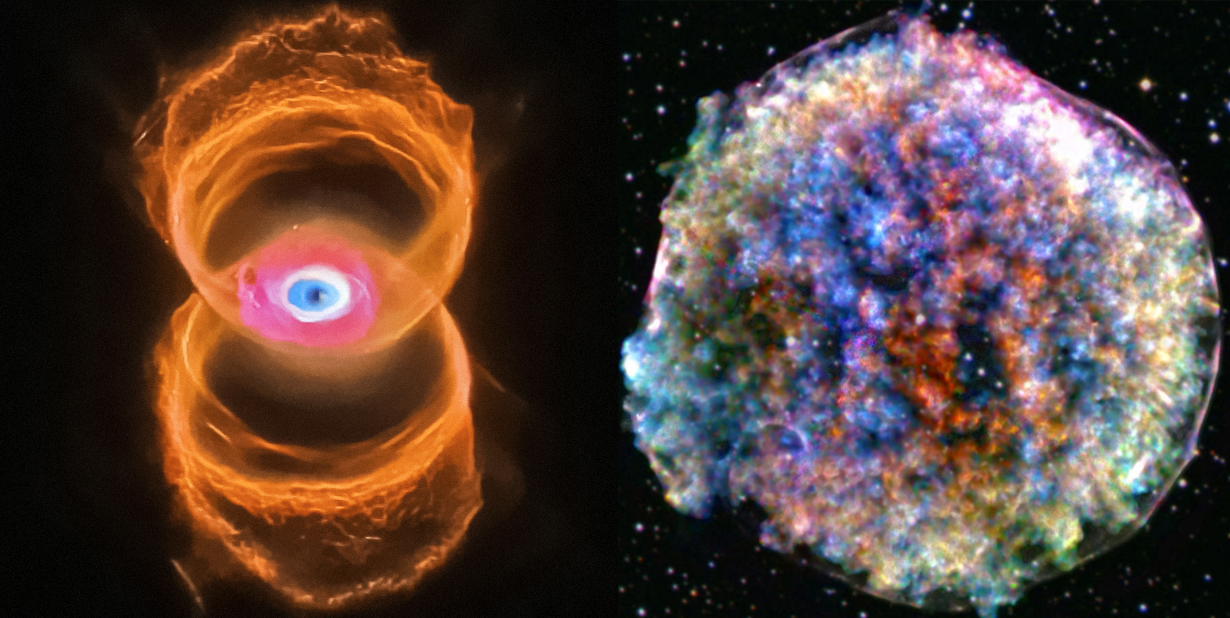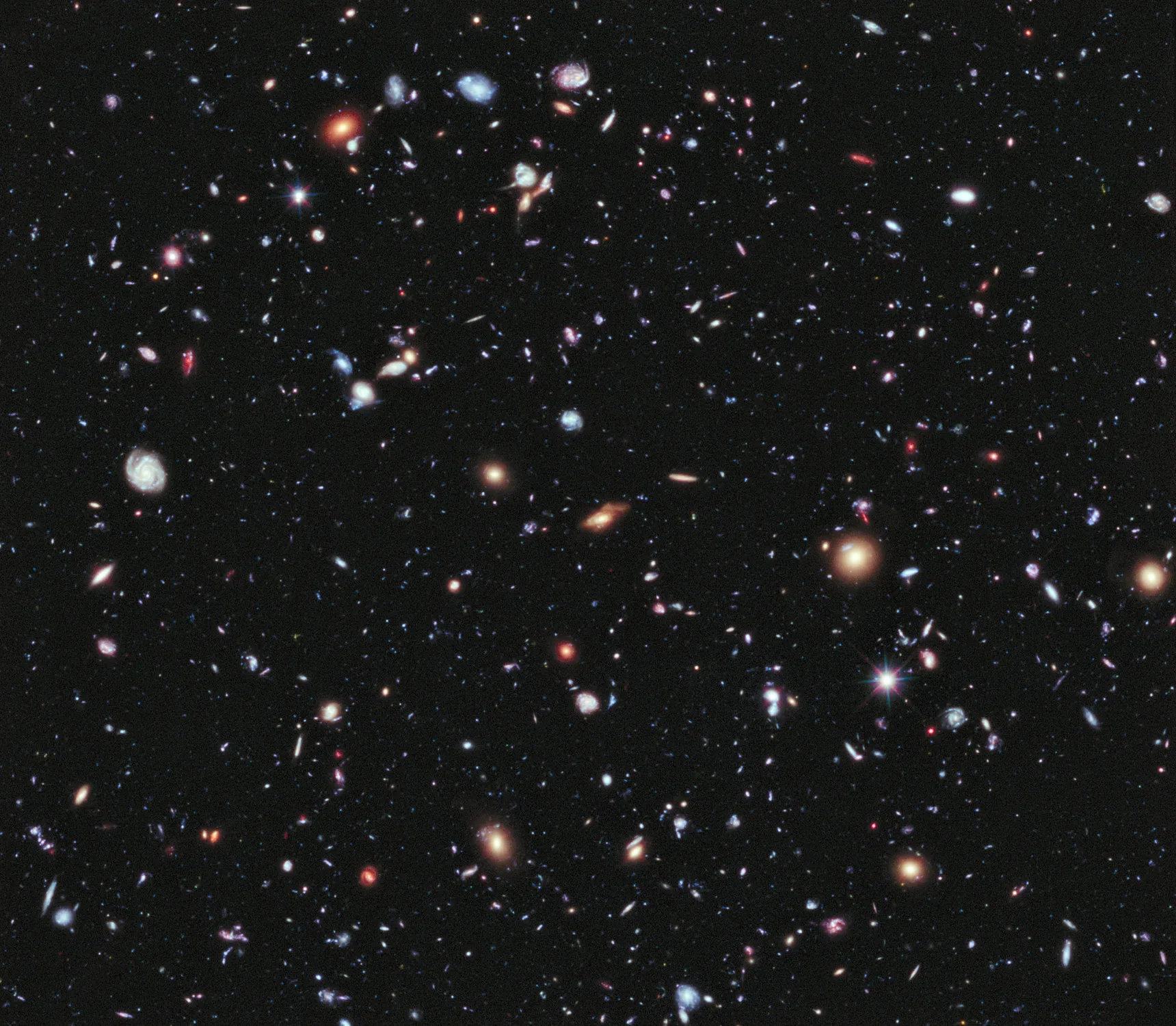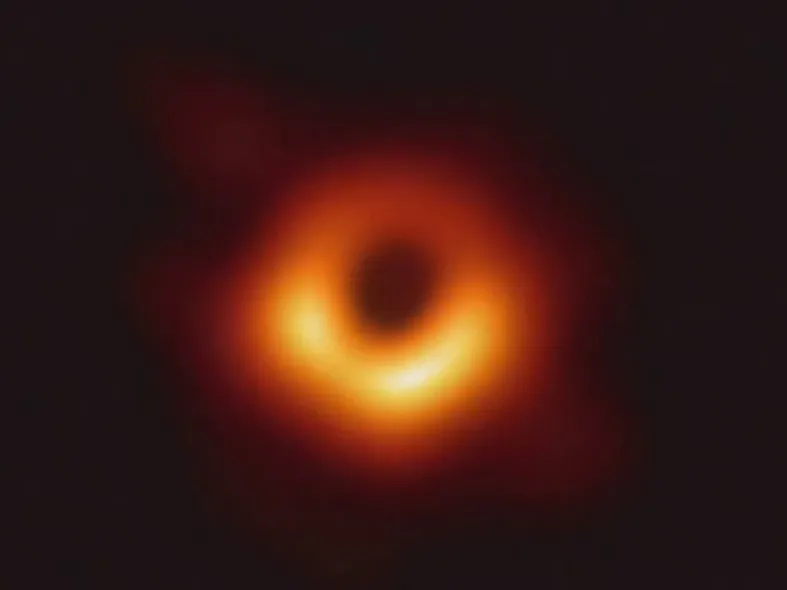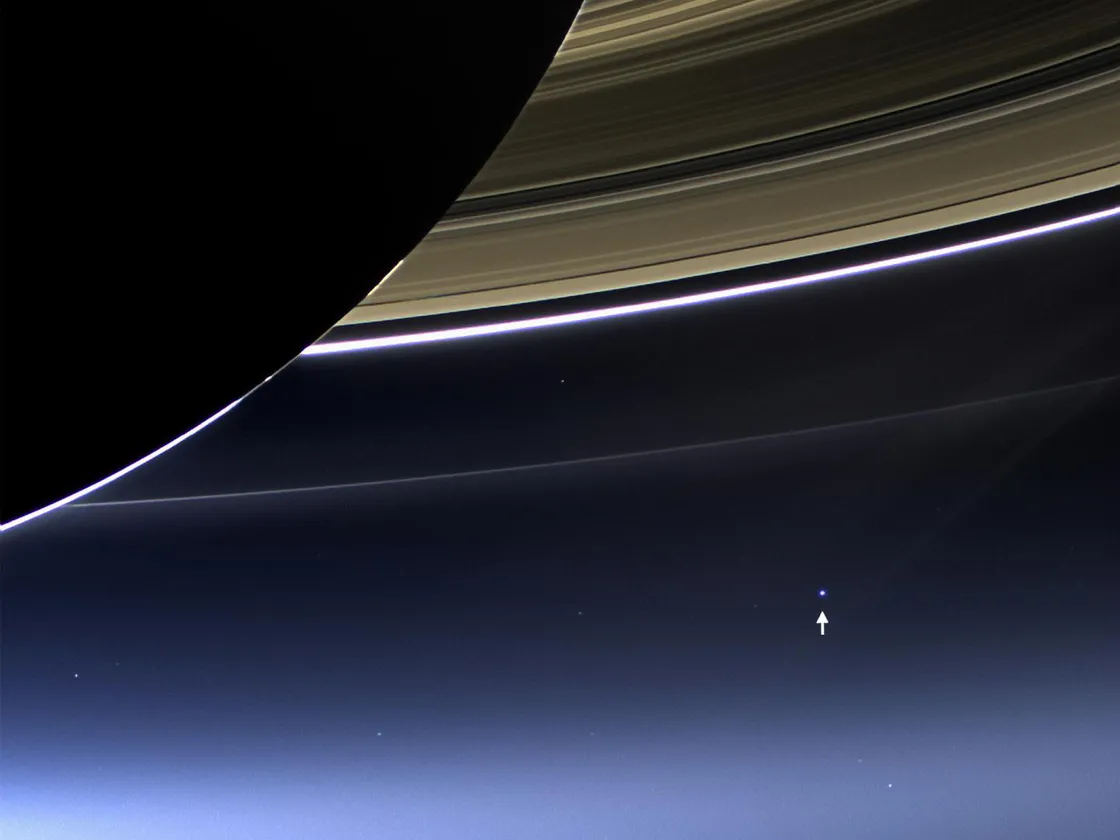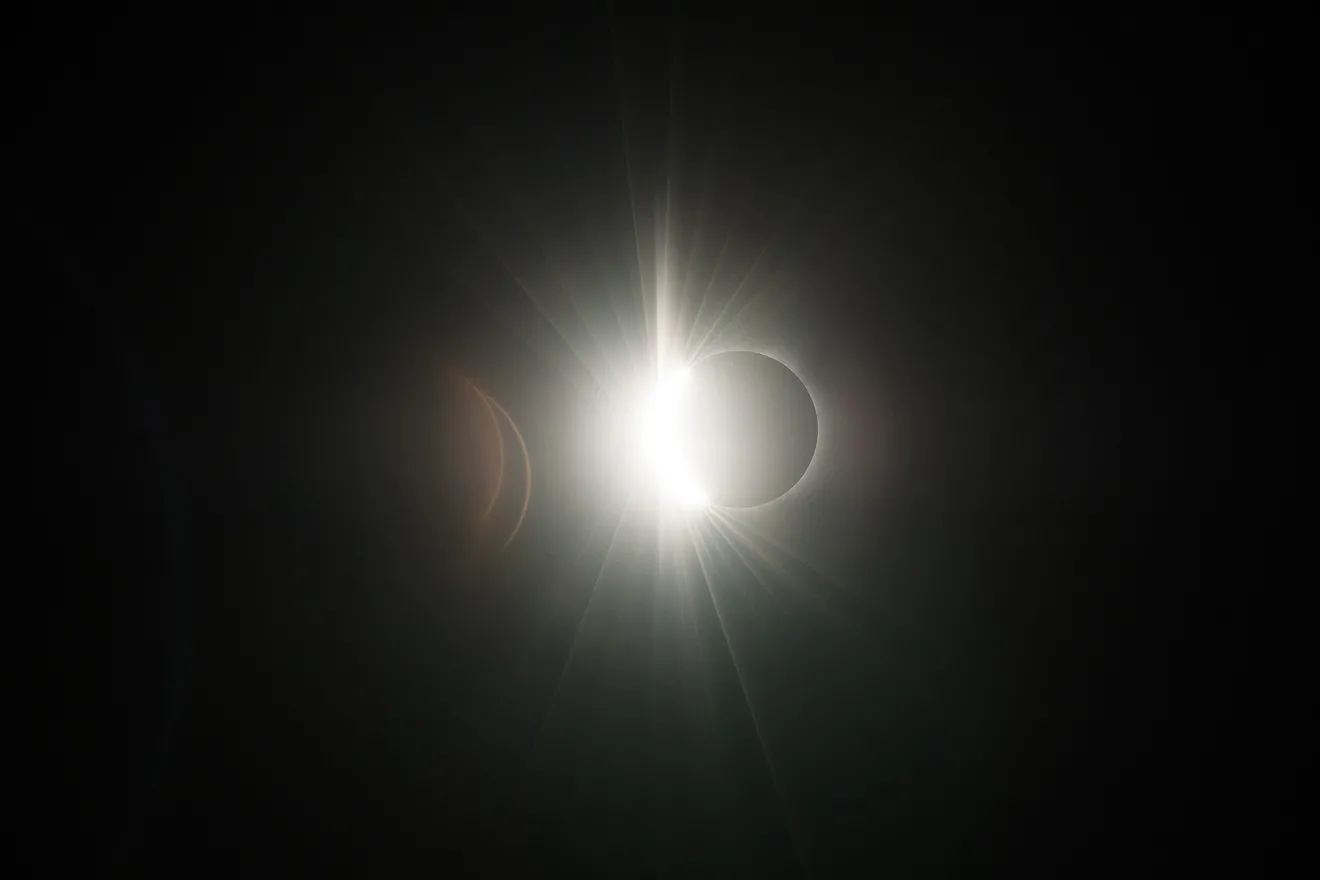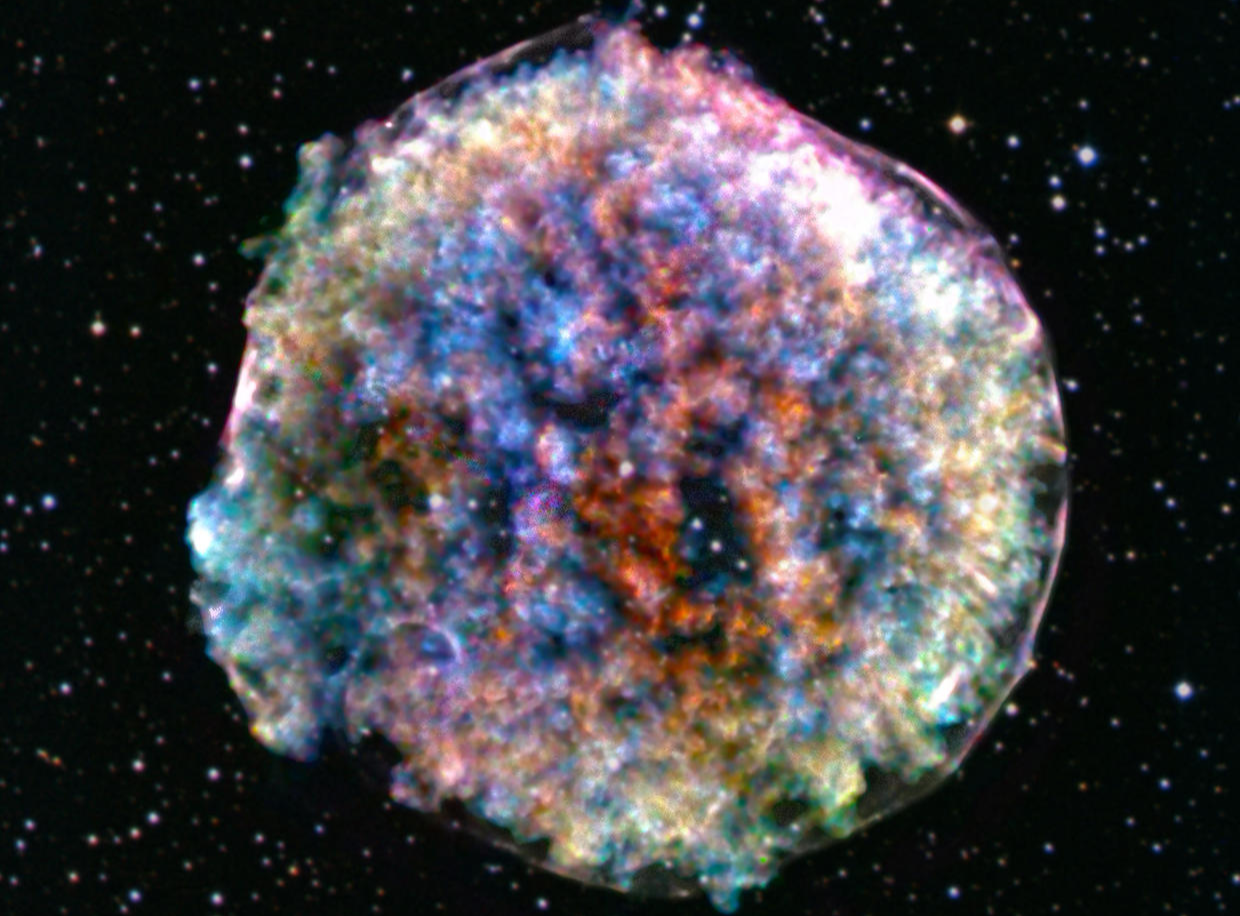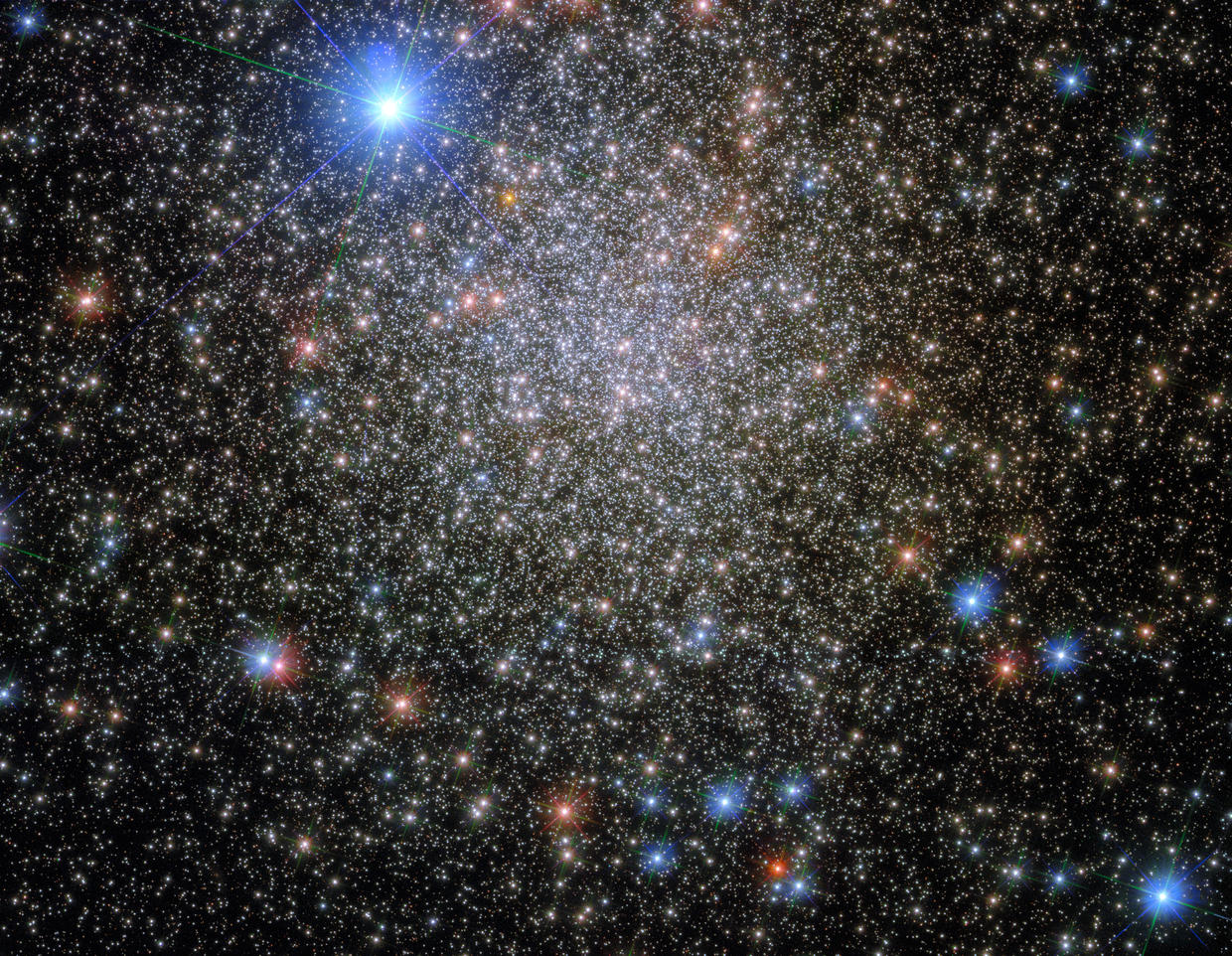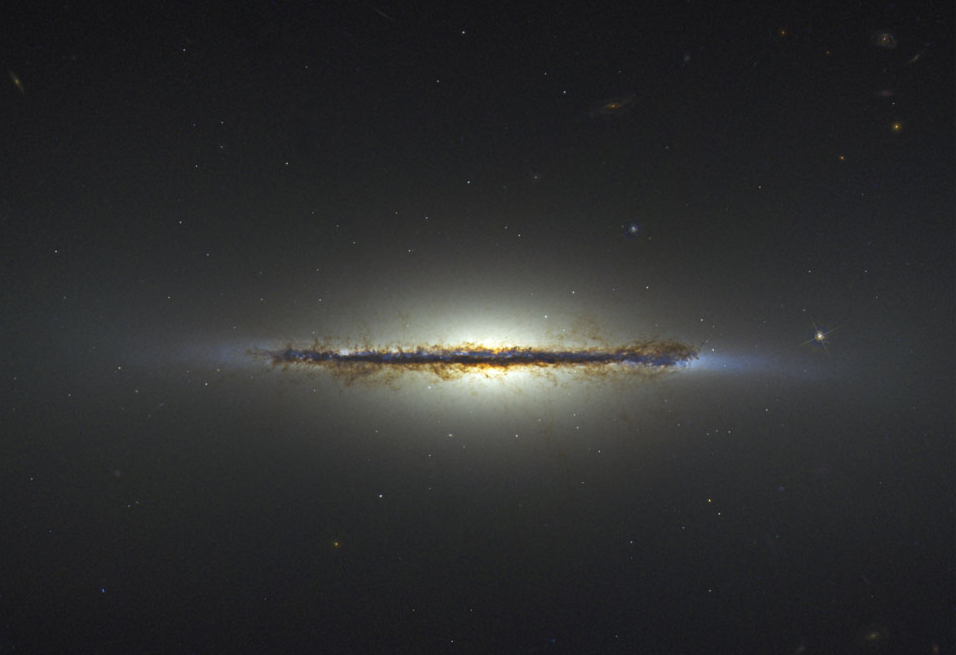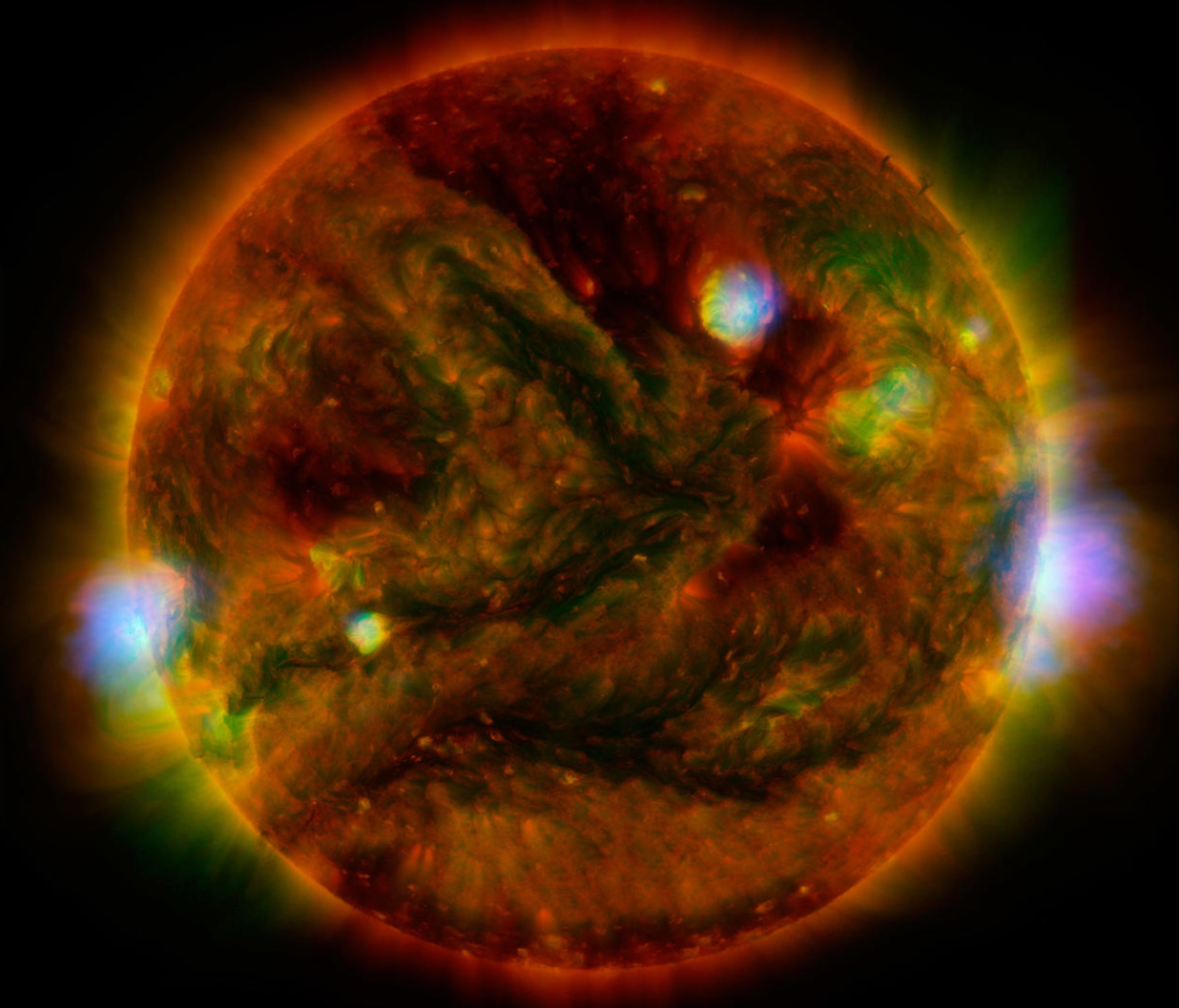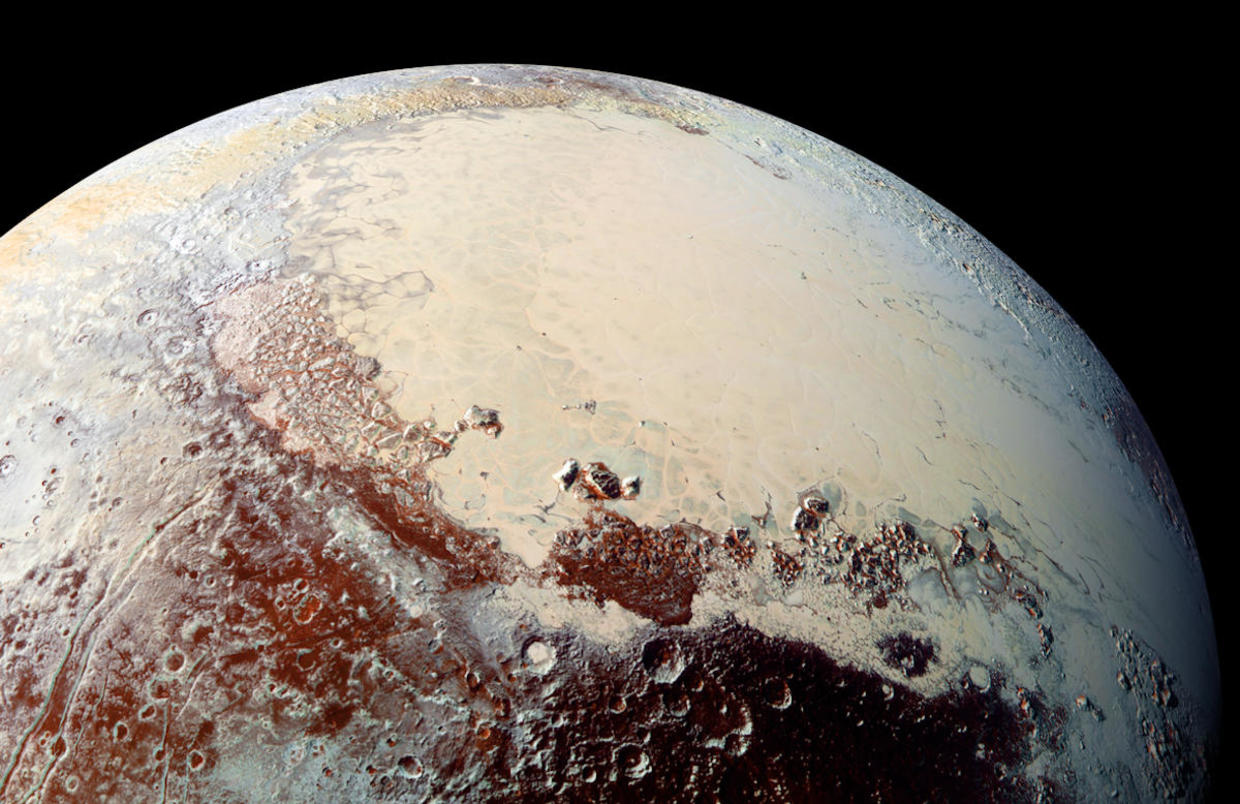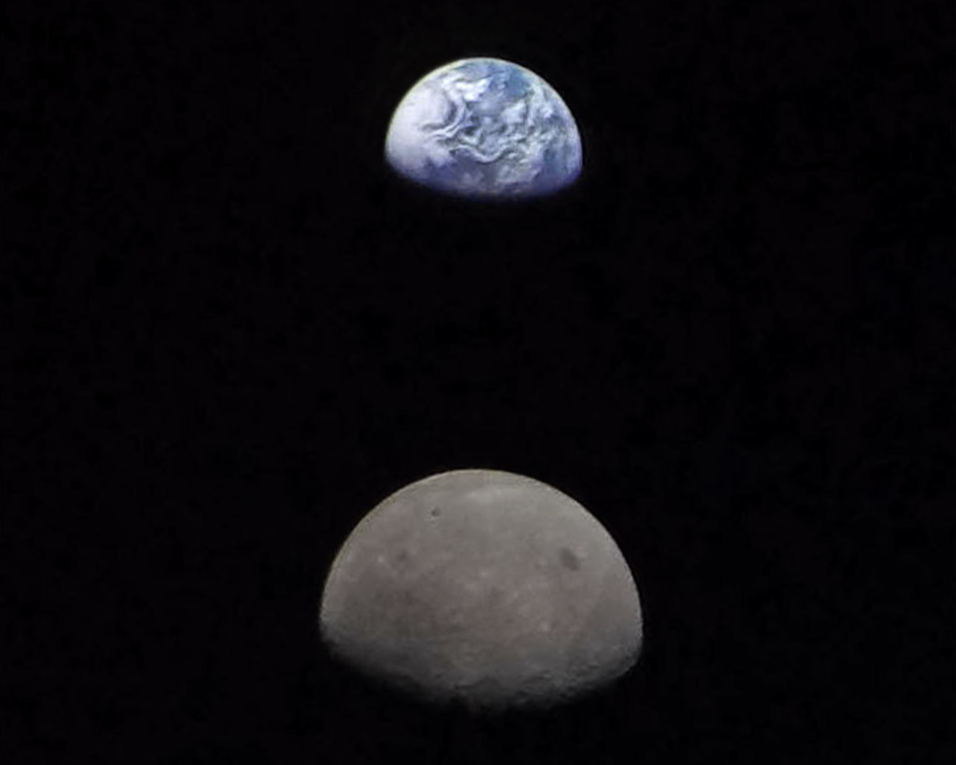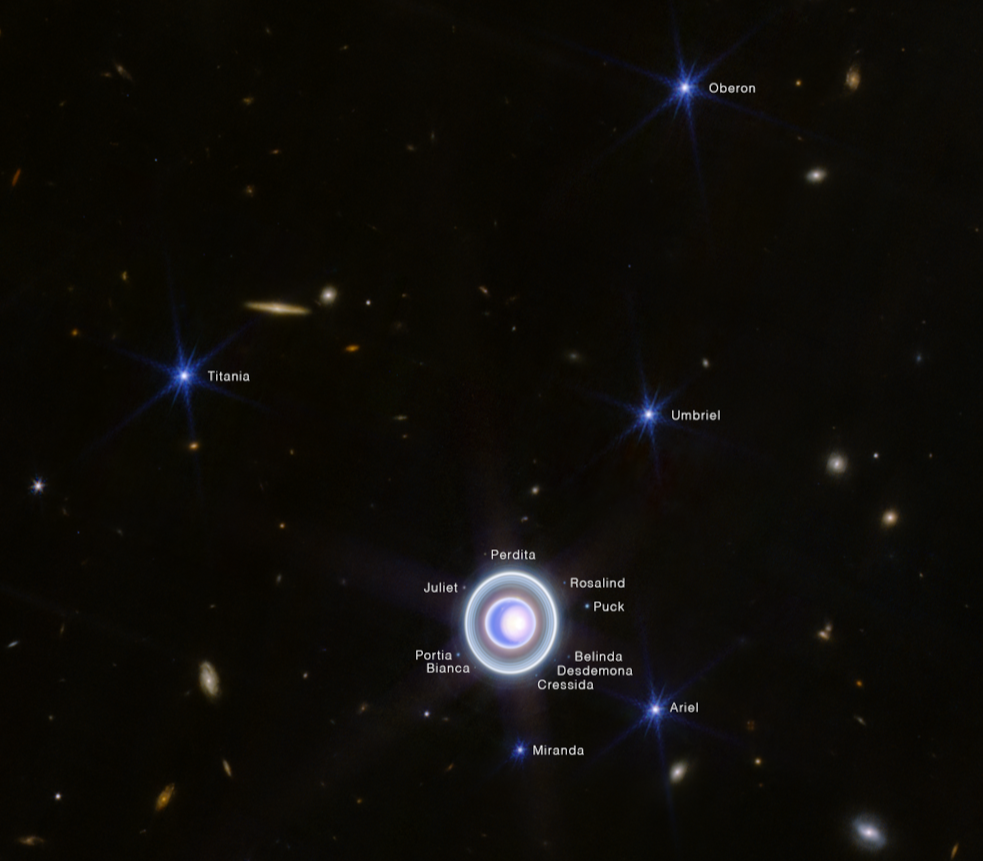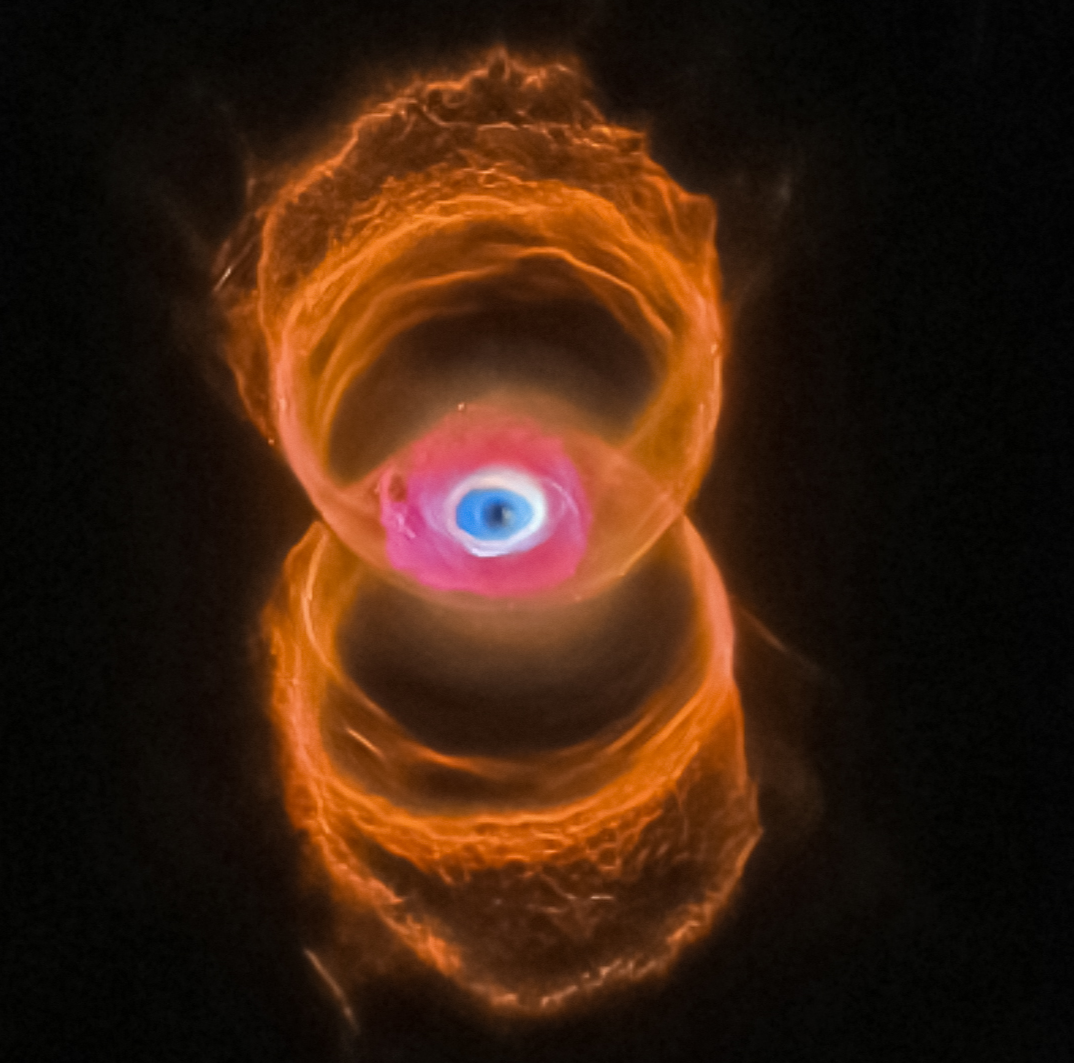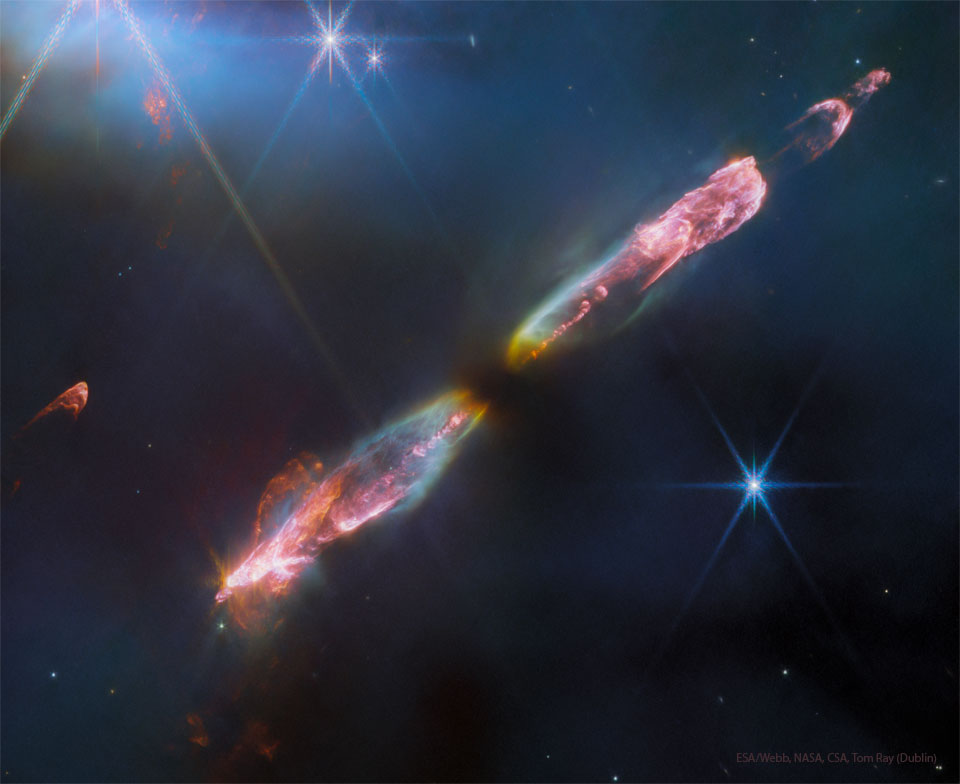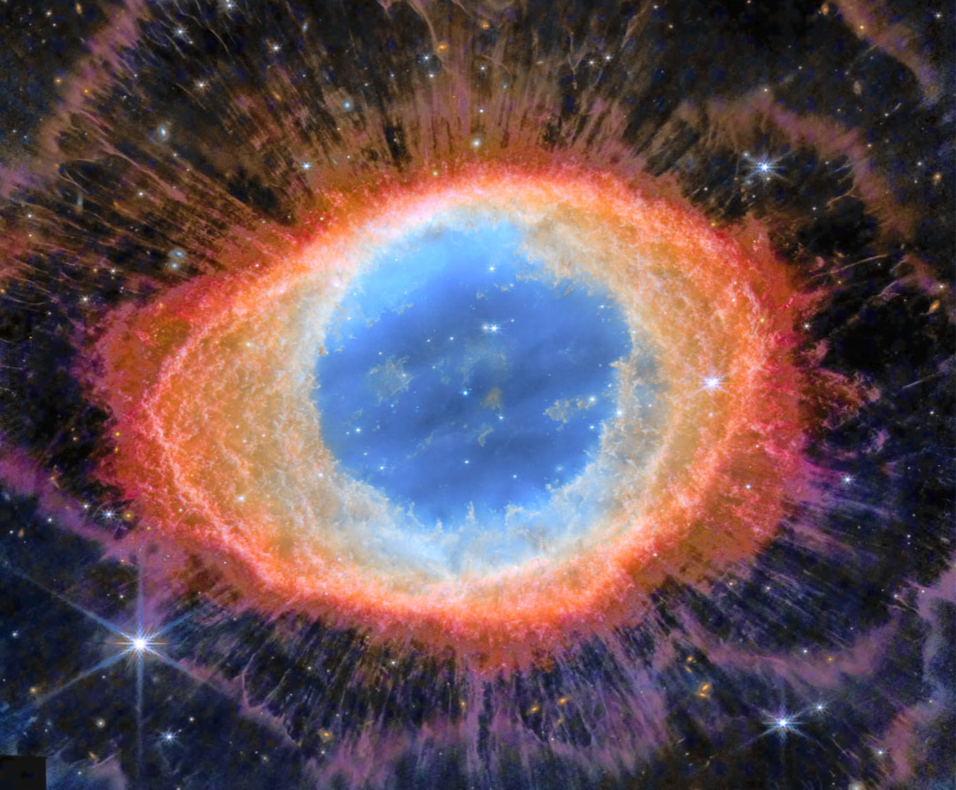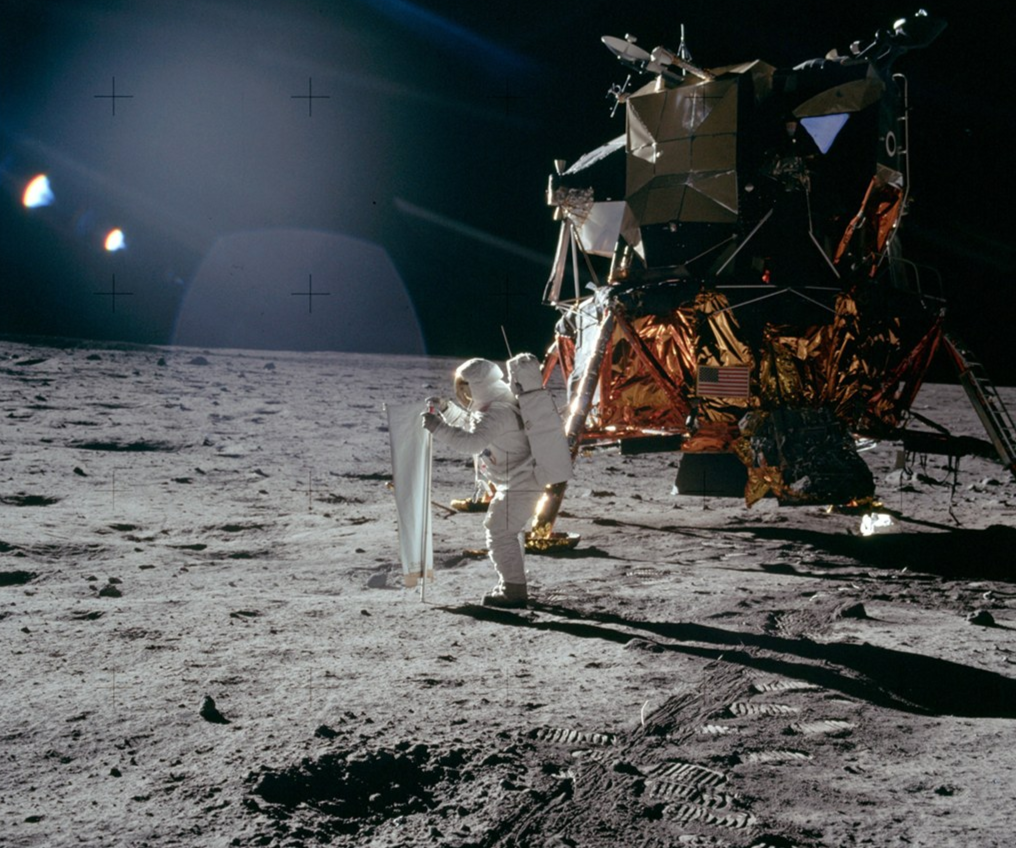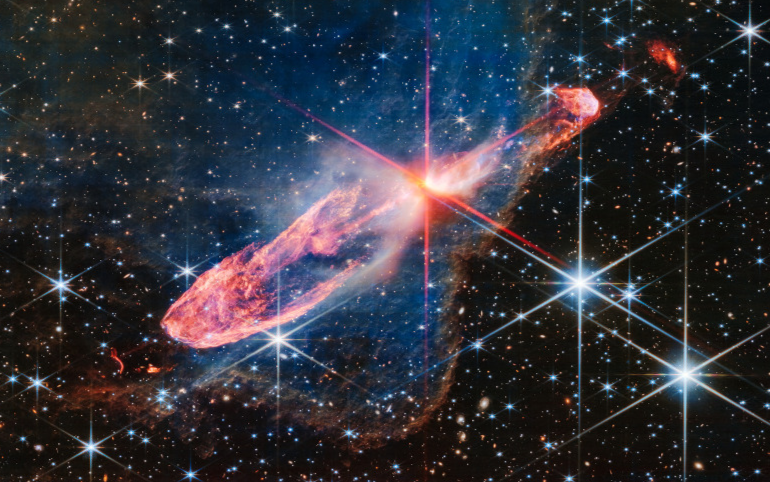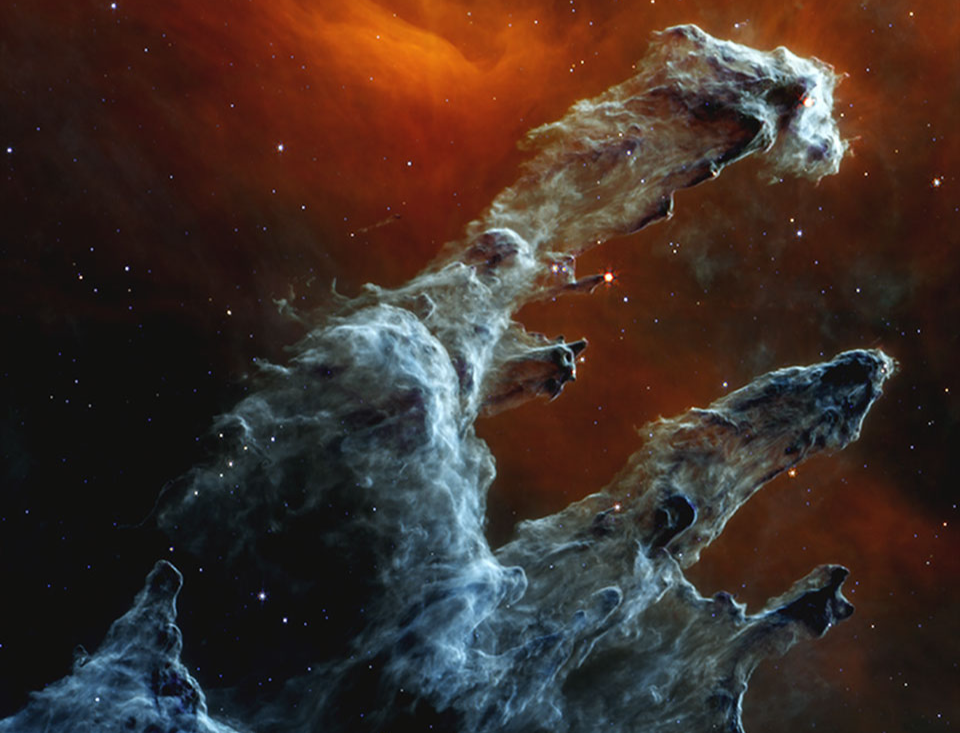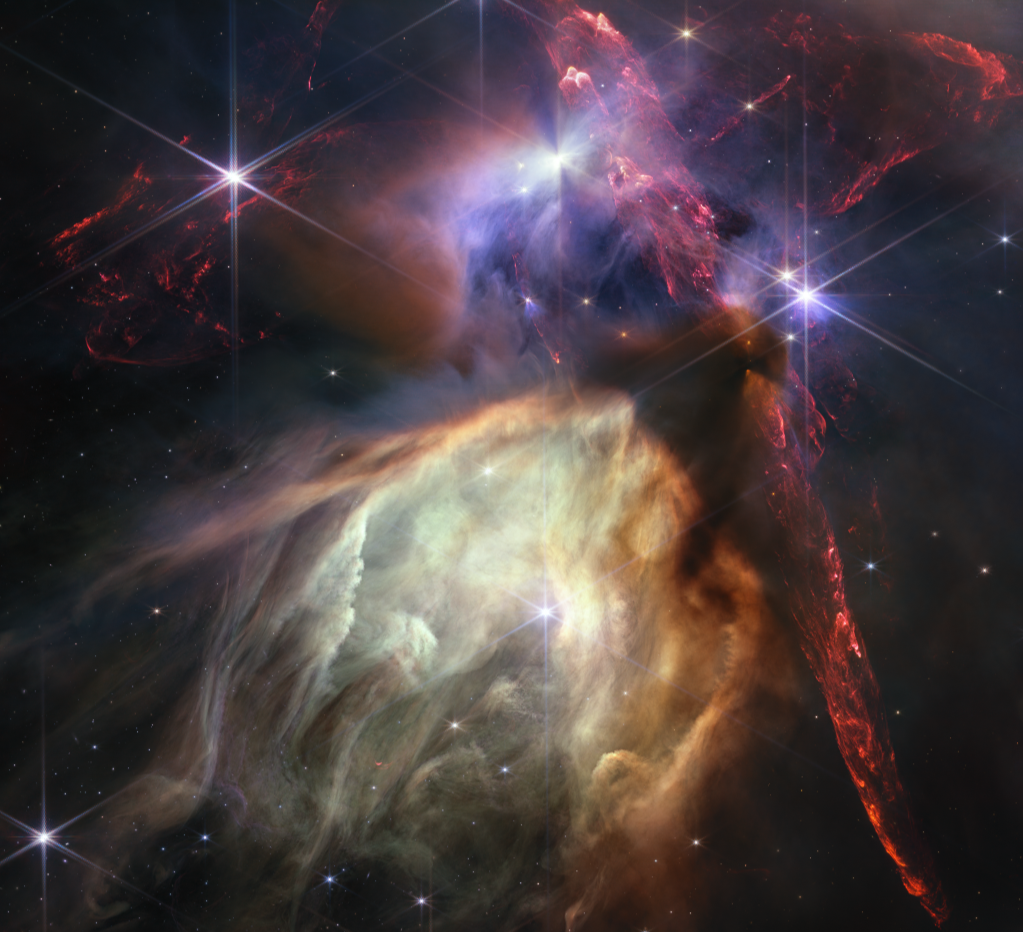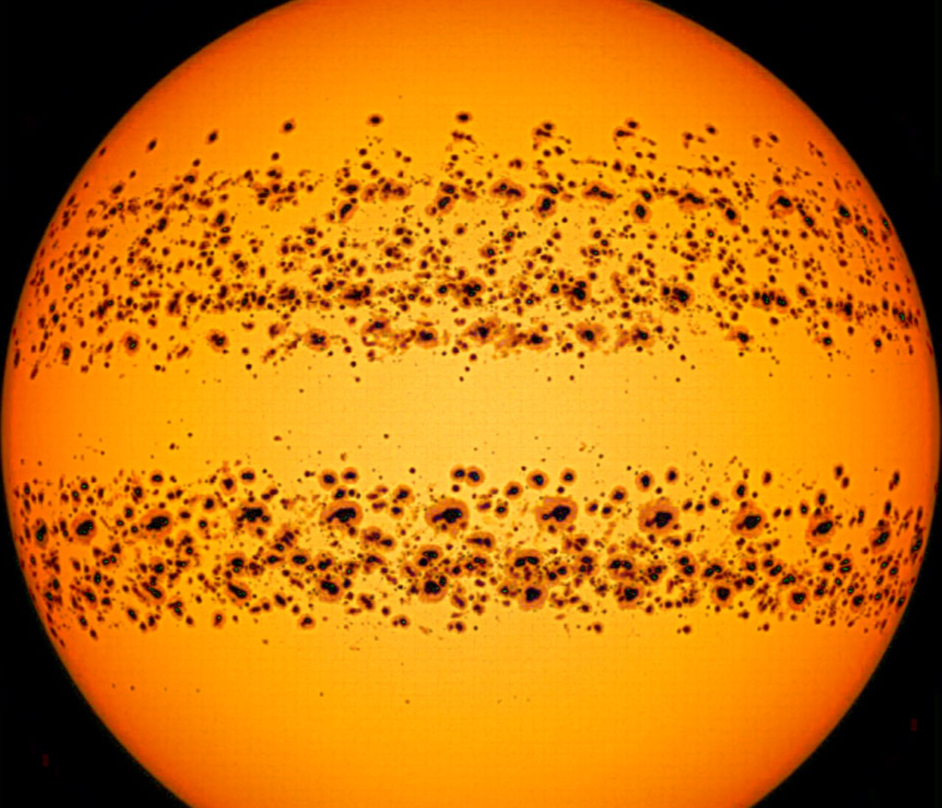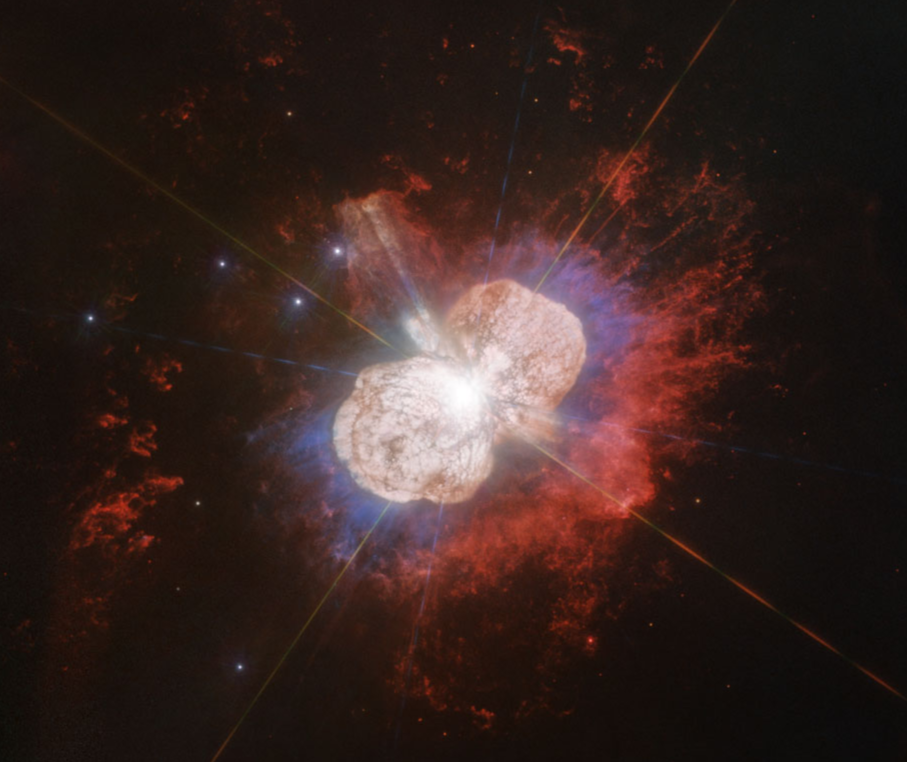The Secrets Of The Universe
Since the dawn of time, humanity has gazed into the night sky, searching for answers to life’s greatest mysteries. Though much remains unknown, the relentless quest of astronomers and physicists fuels our wonder and expands the boundaries of what we believe is possible. These extraordinary photos from the depths of space offer a glimpse into the vast unknown—and invite us to rethink our place in the cosmos.
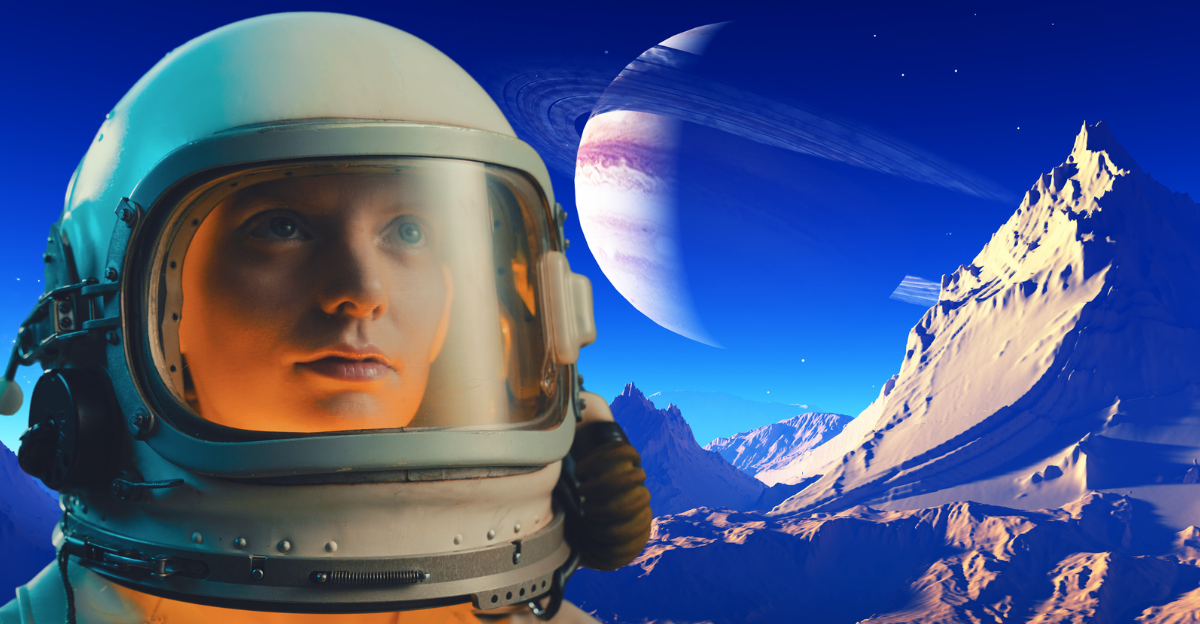
An Unfathomable Vastness
In 2012, the Hubble Space Telescope's eXtreme Deep Field observation was published. It combined 1,000 images taken over a decade, and each speck of light represents a galaxy, so there are as many as 5,500 galaxies in this image alone. The craziest part? This only represents a 30-millionth of the whole sky.
The First Image Of A Black Hole
Scientists from all over the world collaborated on a project called the Event Horizon Telescope and brought forth the first image of a black whole—ever. The image shows the edge of a gargantuan void in the middle of the Messier 87 galaxy, which is 53.49 million light-years away.
Earth From Saturn
Rarely do we get images of our own planet from another one in our solar system. This image was taken from the Cassini mission, and it shows a view of Earth as it seen from the dark side of Saturn.
Rover Selfie
No human has set foot on Mars—yet—but our robotic explorers have been busy uncovering its secrets. In 2012, the Curiosity Rover touched down on the red planet and snapped countless selfies along the way. Thanks to its discoveries, we now know Mars once had flowing water, opening the tantalizing possibility that life might have once thrived there.
The Solar Eclipse That Unified America
The United States in 2017 was full of tension. Coming hot off a controversial election, the American people were as divided as ever. But there was one event that brought everyone together—in August of that year, 216 million Americans stopped what they were doing to observe the solar eclipse. It was a moment of both unity and awe.
Aurora In The Sky
The Northern Lights are beautiful from the ground, but have you ever seen them from above? They're just as beautiful, dancing up in the Earth's atmosphere, but you can see the lights follow the Earth's contour and it's a magnificent sight.
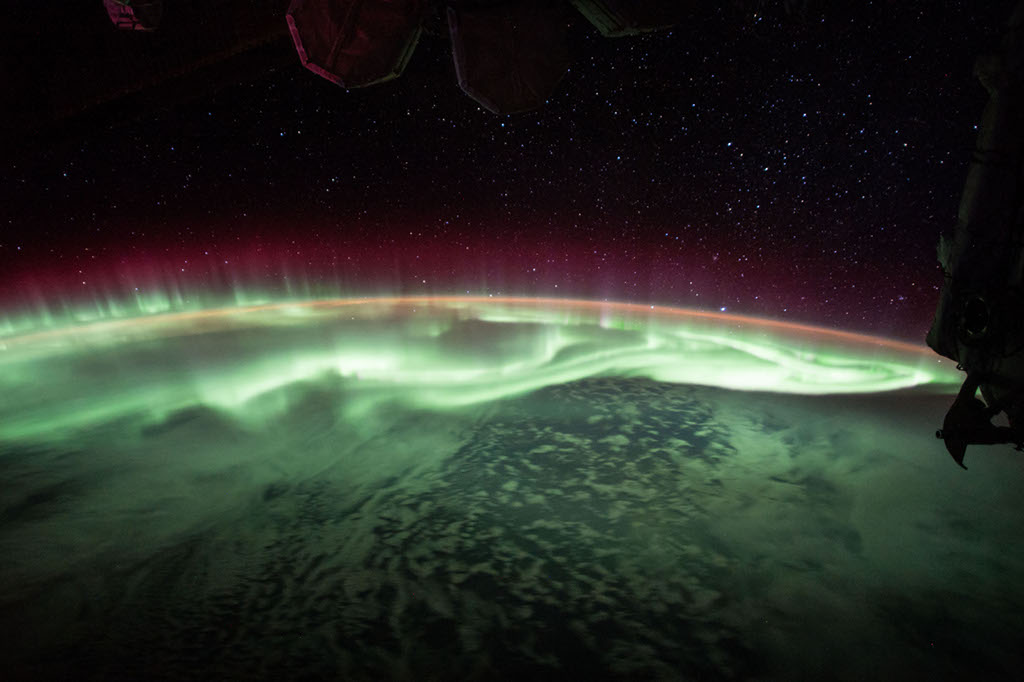 NASA Jack Fischer, Expedition 52
NASA Jack Fischer, Expedition 52
A Prismatic End
We all know that a supernova is the explosion that occurs when a star dies. But what does it actually look like? One image taken by novice astronomer Yuji Nakamura captured a supernova event in the Cassiopeia constellation. The colors you see represent the X-ray radiation that was released during the explosion.
Scorpio's Lights
Hey Scorpios, check this out! This dazzling image captures NGC 6380, a globular cluster nestled in your constellation. And get this—it’s a staggering 35,000 light-years away from Earth.
Colliding Galaxies
It's difficult to imagine a galaxy colliding with another galaxy, but this image depicts exactly that happening. The galaxy known as NGC 7714 is seen here being stretched and distorted due to a recent collision with a neighboring galaxy. It's frightening to think that could happen to our precious Milky Way someday.
The Earth Isn't Flat—But The Galaxy (Kind Of) Is
This is a view of the Spindle galaxy, NGC 5866 from its edge. Just like many other galaxies (including our very own Milky Way), it takes on more of a disk shape because the gas that forms it collides with itself and rotates about the gravitational center.
NGC 6369: The Little Ghost Nebula
The Little Ghost Nebula has been observed since the 18th century, when astronomer Sir William Herschel saw it through his telescope while exploring the Ophiucus constellation. Hundreds of years later, we are still in awe of it, and thanks to better technology we can see it in all its blue-green glory.
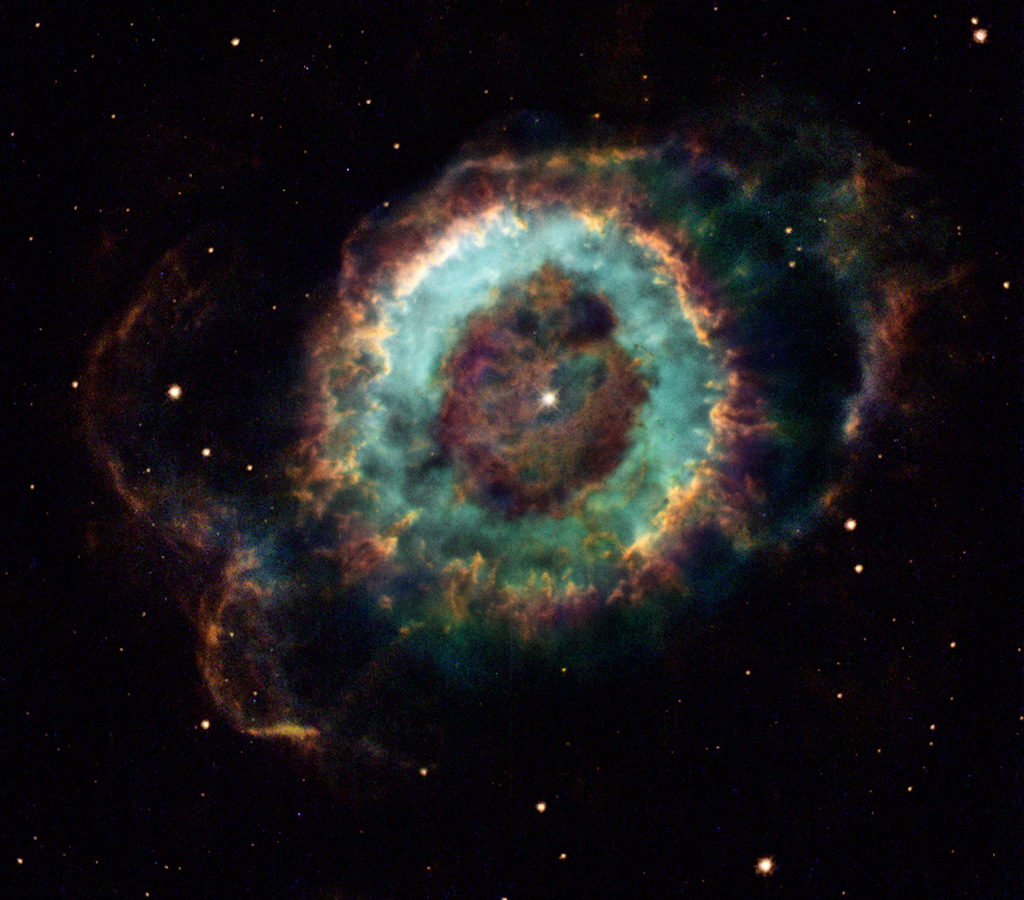
Mars' Engulfed In Dust
Hollywood’s portrayal of Mars engulfed in massive dust storms isn’t far from the truth. In 2001, NASA captured striking images of a planet-wide dust storm unfolding just months apart—showing Mars in all its dusty drama.
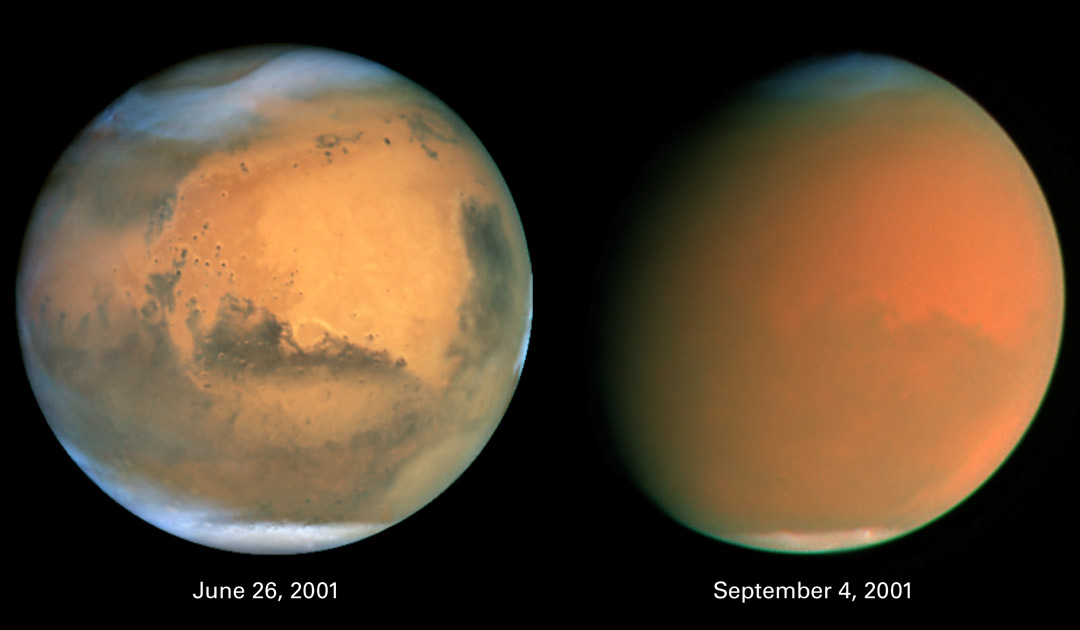 NASA, J. Bell (ASU), M. Wolff (Space Science Inst.), Hubble Heritage Team (STScI / AURA)
NASA, J. Bell (ASU), M. Wolff (Space Science Inst.), Hubble Heritage Team (STScI / AURA)
Cone Nebula From Hubble
One of the most mind-blowing sights to see in space is a nebula because it indicates that stars are being born. In this image of the Cone Nebula, stars are forming in the massive dust pillar.
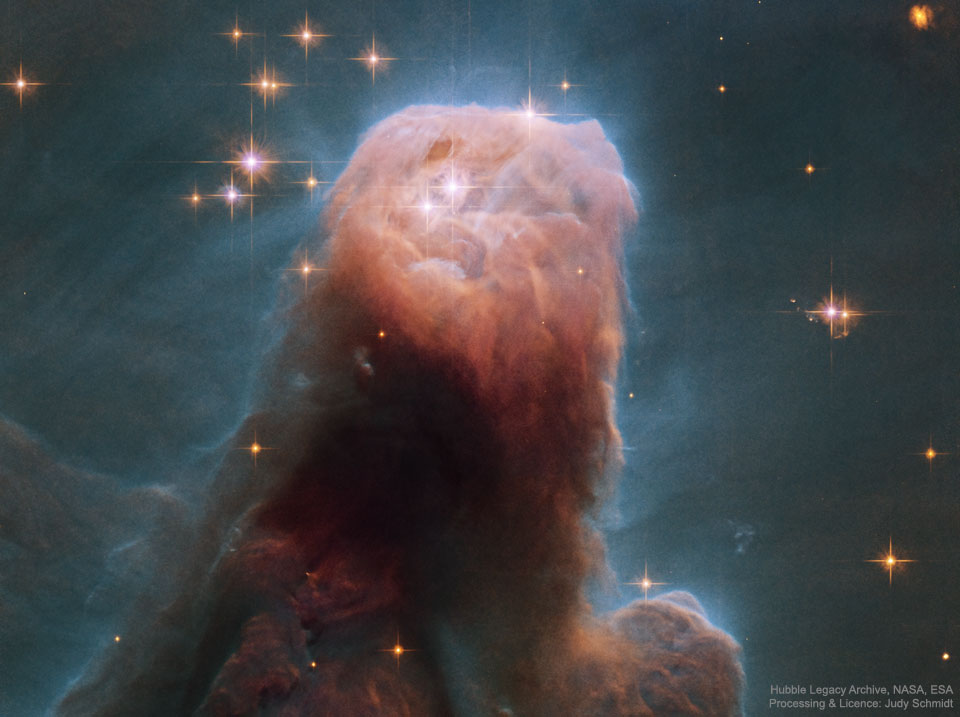 Hubble Legacy Archive, NASA, ESA
Hubble Legacy Archive, NASA, ESA
Staring At The Sun
We're told not to stare directly at the sun, but through this image we can. This is a 2015 composite image of our sun taken from three different spacecrafts and measuring blue high-energy X-rays (by NASA's NuSTAR telescope), green low-energy X-rays (by Japan's Hinode spacecraft), and red and yellow UV light (by NASA's Solar Dynamics Observatory).
Star Cluster IC 348 From Webb
Some stars are harder to see than others. That's the case here with IC 348, a young star cluster that is surrounded with lots of stringy, pink dust. The dust acts to reflect blue light, which lends the star a bluish hue.
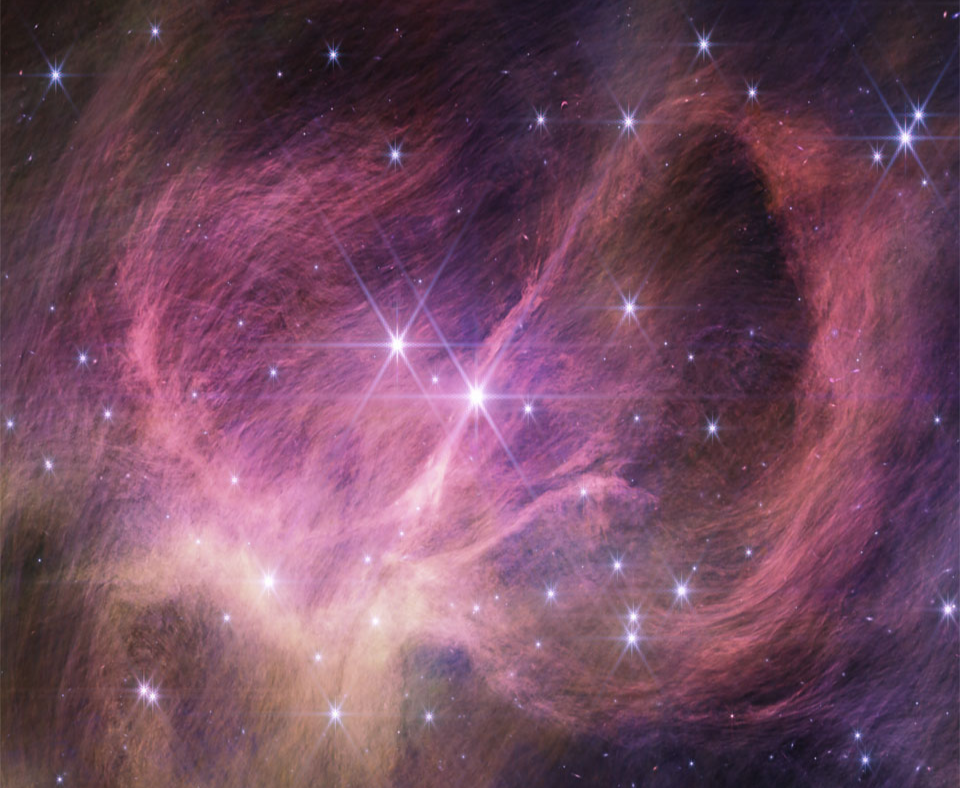 NASA, ESA, CSA, STScI, and K. Luhman (Penn State U.) and C. Alves de Oliveira (ESA)
NASA, ESA, CSA, STScI, and K. Luhman (Penn State U.) and C. Alves de Oliveira (ESA)
Pluto
Once known as the ninth—and farthest—planet from the sun, Pluto was reclassified as a dwarf planet in 2006. This infrared image reveals a massive glacier sculpting its mysterious surface, reminding us there’s still so much to discover.
Mickey Mouse Craters
Three craters forming the likeness of Mickey Mouse, Disney's iconic poster child, is imaged her on Mercury. The craters were identified from NASA's Messenger spacecraft. They are located just northwest to another main crater called Magritte.
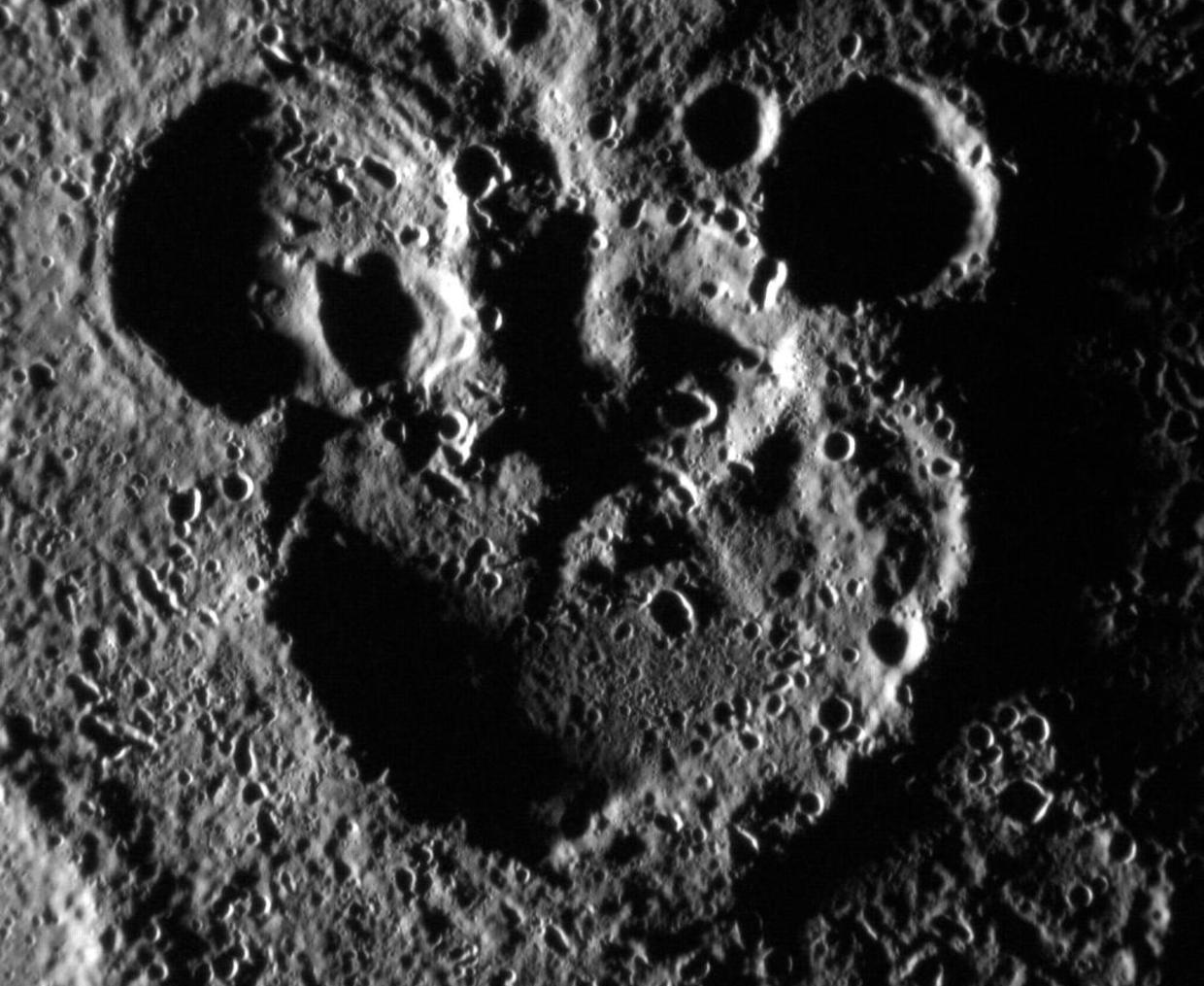 NASA/Johns Hopkins University Applied Physics Laboratory/Carnegie Institution of Washington
NASA/Johns Hopkins University Applied Physics Laboratory/Carnegie Institution of Washington
Earth And Moon
Alternate views of the Earth and the Moon are always fascinating. Here, we see both in the same frame, taken from a distance beyond the moon. This unusual perspective was taken by the Orion spacecraft in 2022.
The Moon's Rocky Surface
If you have red/blue glasses, now's the perfect time to put them on—this stereo view of the moon's surface was taken by Eugene Cernan in 1972 during the Apollo 17 mission, just before it was about to land.
The Cat's Eye Nebula
The Cat’s Eye Nebula is one of the brightest and most intricately detailed nebulae known to us. At its heart lies a dying star, whose final breaths have crafted the stunning concentric shells that glow around it like cosmic ripples.
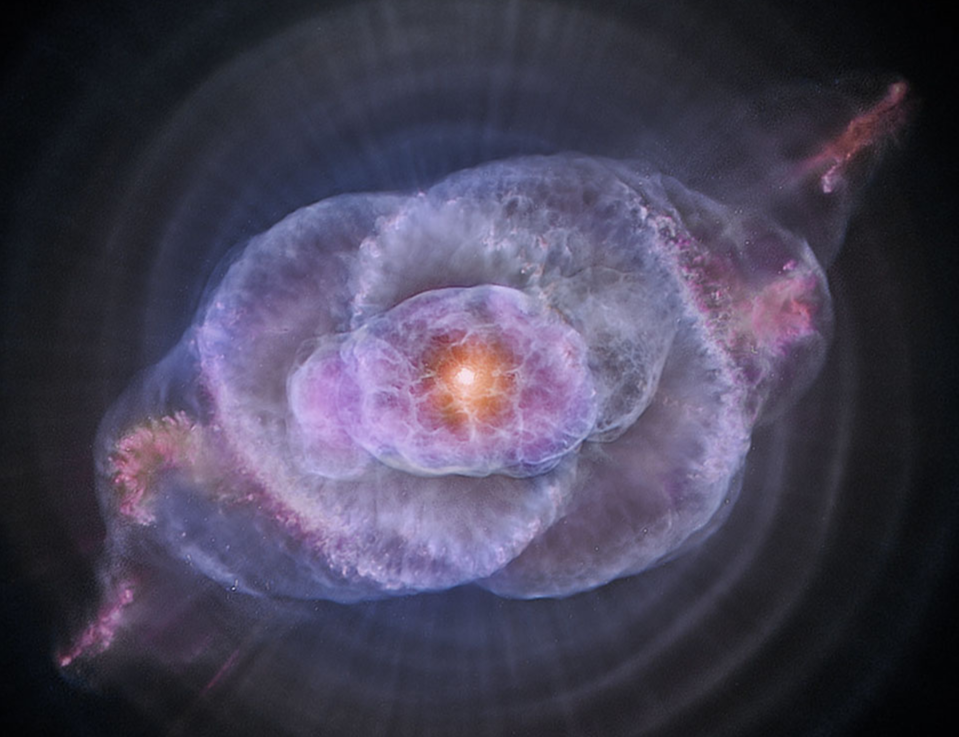 NASA, ESA, Hubble Legacy Archive; Chandra X-ray Obs.
NASA, ESA, Hubble Legacy Archive; Chandra X-ray Obs.
Zeta Oph, The Runaway Star
Imaged here is the Zeta Oph, which is known as the Runaway Star. The the bow wave seen here is a result of the strong stellar wind preceding the star as it moves, which compressess interstellar material in front of it into a shock front.
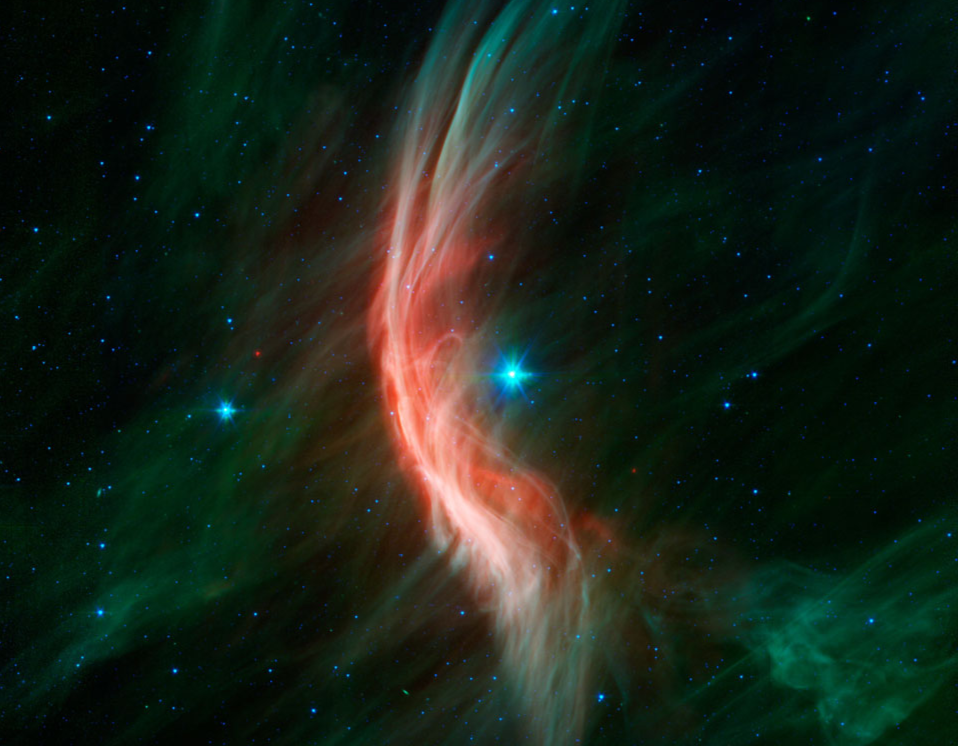 NASA, JPL-Caltech, Spitzer Space Telescope
NASA, JPL-Caltech, Spitzer Space Telescope
Interstellar Shakespeare
The James Webb Telescope released this image of Uranus, offering a detailed portrait of the ice planet and some of its moons. Almost all of its 27 moons, with the exception of two, are named after famous characters in Shakespeare's plays.
Metamorphasis Of A White Dwarf
Similar to a butterfly emerging from its cocoon, a white dwarf star initiates its existence by shedding a shell of gas that once surrounded its previous form. Within this cocoon, NGC 2440, a planetary nebula, is one of the most scorching white dwarf stars identified. This luminous white dwarf is visible as a vivid orange point seen in the center.
 NASA, ESA, Hubble; Processing: H. Bond (STScI), R. Ciardullo (PSU), Forrest Hamilton (STScI)
NASA, ESA, Hubble; Processing: H. Bond (STScI), R. Ciardullo (PSU), Forrest Hamilton (STScI)
The Origin Of A Comet Tail
In 2016, the ESA’s Rosetta spacecraft caught a sudden jet erupting from Comet 67P. What triggered this dramatic plume remains a mystery, but beneath the comet’s rocky surface, something powerful was clearly stirring.
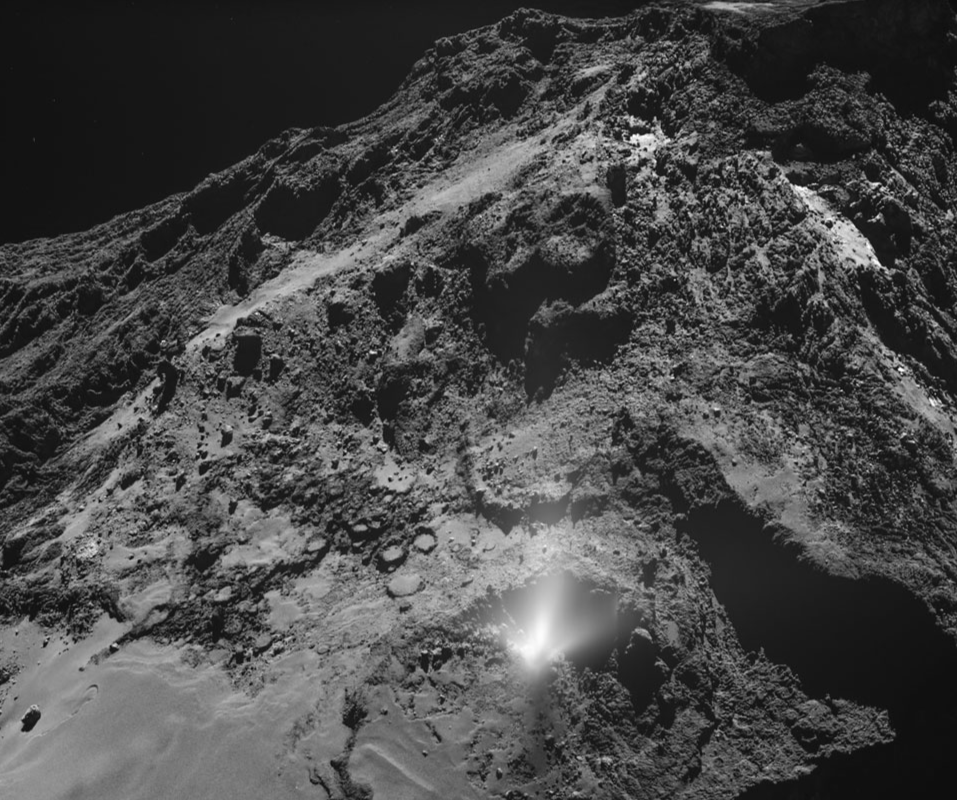 ESA, Rosetta, MPS, OSIRIS; UPD/LAM/IAA/SSO/INTA/UPM/DASP/IDA
ESA, Rosetta, MPS, OSIRIS; UPD/LAM/IAA/SSO/INTA/UPM/DASP/IDA
The Crab Nebula
The Crab Nebula is recognized as a remnant of a supernova, representing the dispersing remnants of a colossal star's demise. Astronomers observed the dramatic birth of the Crab in the year 1054 and it contiues to expand today at a rate of 1,500 km per second.
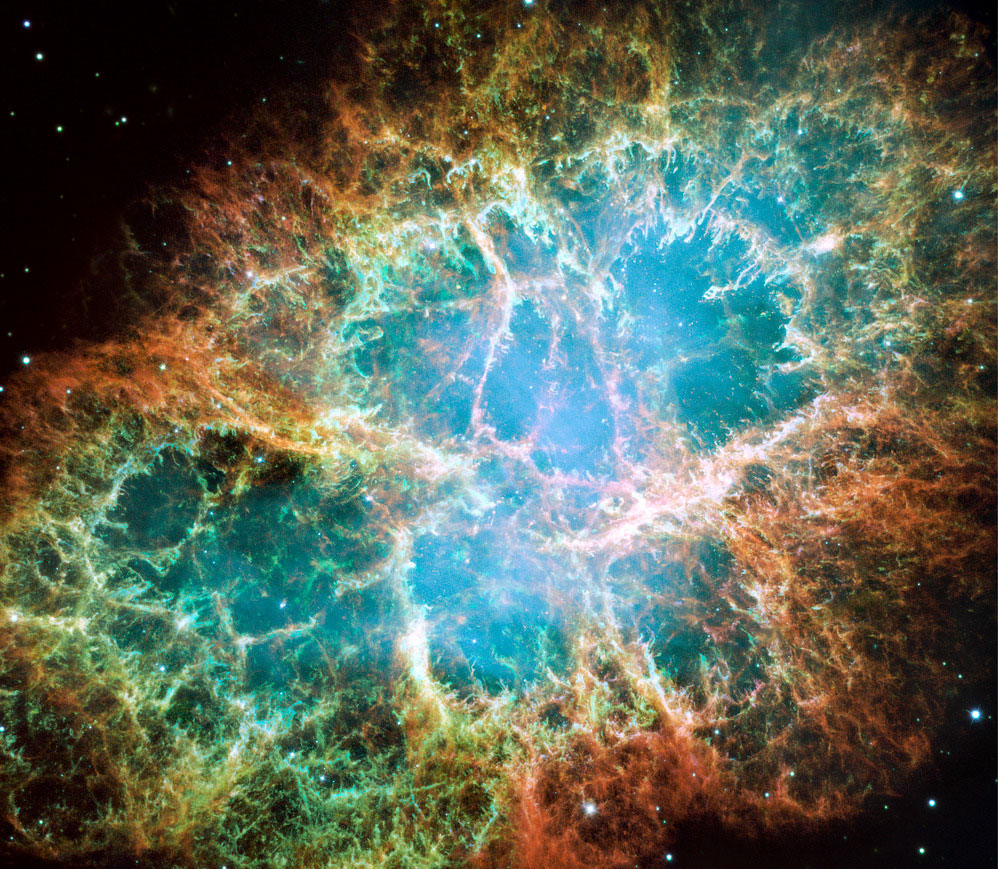 NASA, ESA, CSA, STScI; Jeff Hester (ASU), Allison Loll (ASU), Tea Temim (Princeton University)
NASA, ESA, CSA, STScI; Jeff Hester (ASU), Allison Loll (ASU), Tea Temim (Princeton University)
The Hourglass Nebula
The rings of this nebula, MyCn 18, form the outline of an hour glass—but the truly bizarre component is the eye in the center, which lends this image an eerie feel. Could it be that we are all just tiny molecules in a bigger organism?
The Hummingbird Galaxy
This galaxy takes on the shape of a hummingbird. In this image, you can see a grouping of blue stars forming the beak, while the orange spiral is perfectly placed to represent the eye.
Jets Forming A Star
This striking image reveals Herbig-Haro 211, a young star still in the throes of formation, captured with stunning detail by the Webb Space Telescope using infrared light. Twin jets of particles stream out from the star, their crimson shockwaves blazing as they slam into the surrounding interstellar gas.
Galaxy Cluster Abell 370
The immense galaxy cluster Abell 370 is depicted in this clear snapshot from the Hubble Space Telescope, situated approximately 4 billion light-years distant. Despite the impression of being controlled by two massive elliptical galaxies, the cluster actually harbors a multitude of faint arcs.
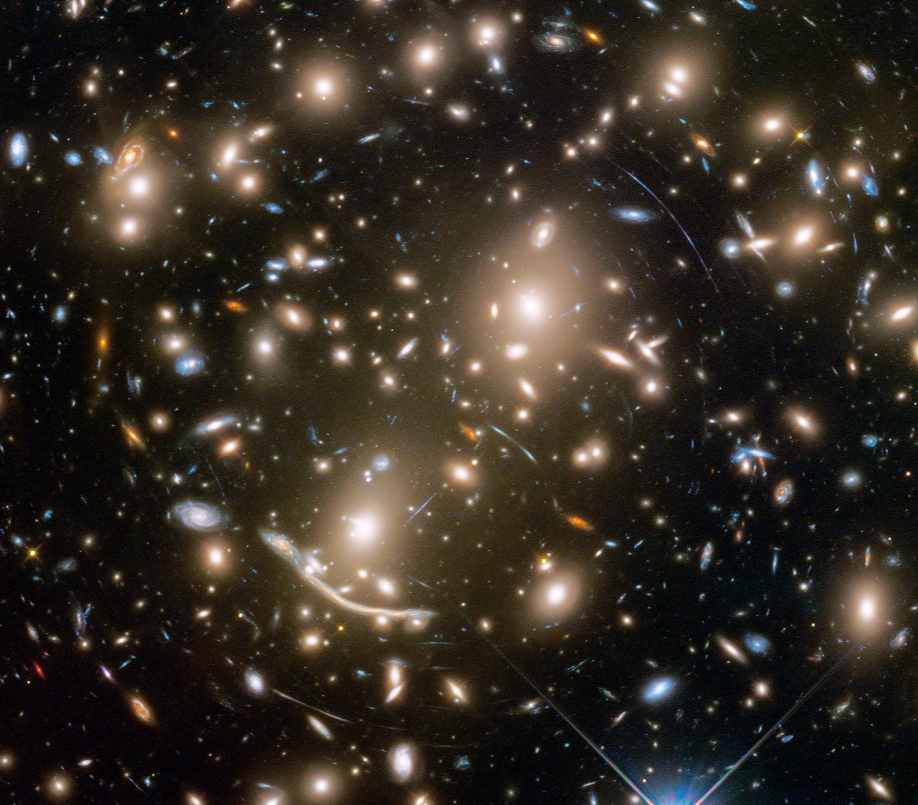 NASA, ESA, Jennifer Lotz and the HFF Team (STScI)
NASA, ESA, Jennifer Lotz and the HFF Team (STScI)
The Ring Nebula From Webb And Hubble
In this digitally-enhanced image, strands of gas resembling eyelashes encircling a cosmic eye become visible around the Ring Nebula, depicted in assigned colors. These extended filaments likely result from the shadowing of dense gas knots within the ring, influenced by energetic light emissions. The Ring Nebula, an elongated planetary nebula, emerges when a Sun-like star sheds its outer atmosphere to transform into a white dwarf star.
The Sombrero Galaxy
The visually-striking Sombrero Galaxy ranks among the largest galaxies within the nearby Virgo Cluster of Galaxies. Contrary to its appearance in optical light where a dark band of dust obscures its mid-section, this very band illuminates brightly when observed in infrared light.
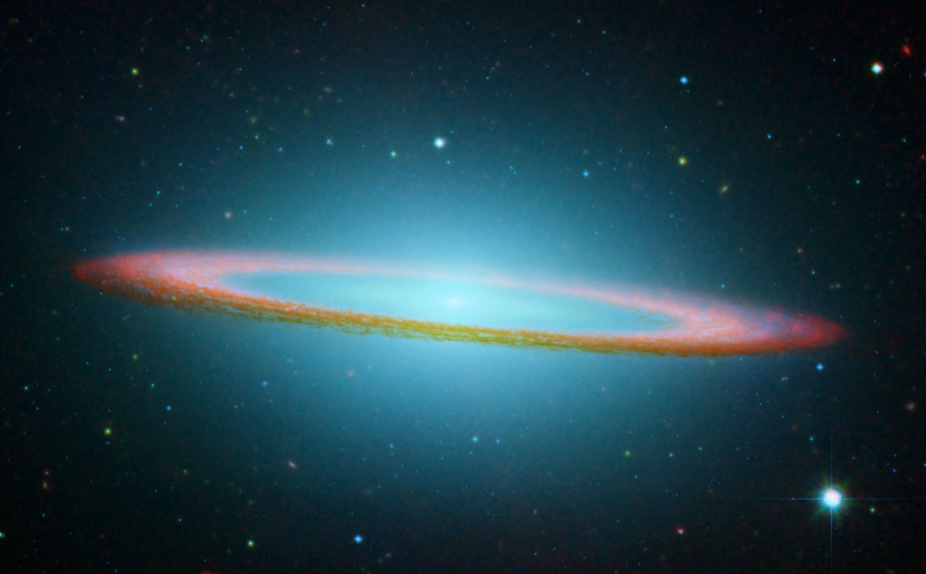 R. Kennicutt (Steward Obs.) et al., SSC, JPL, Caltech, NASA
R. Kennicutt (Steward Obs.) et al., SSC, JPL, Caltech, NASA
Supernova Ribbon
In 1006 AD, a supernova in the Lupus constellation lit up the sky as a brilliant "guest star," outshining Venus for over two years. Known as SN 1006, this cosmic explosion occurred 7,000 light-years away, leaving behind a massive, ever-expanding remnant that continues to fade today.
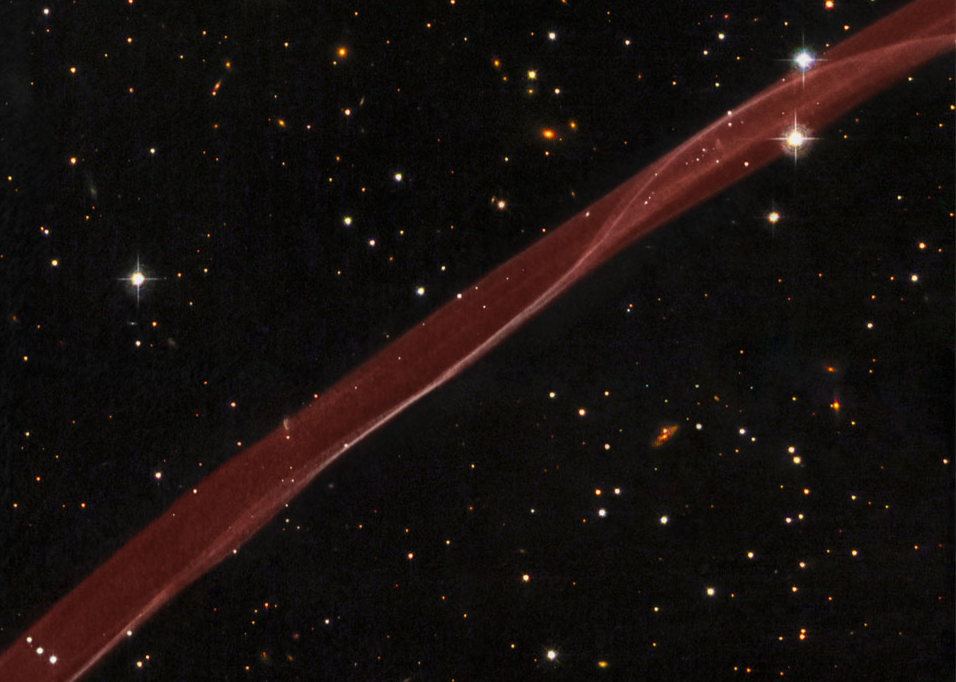 NASA, ESA, Hubble Heritage (STScI/AURA)
NASA, ESA, Hubble Heritage (STScI/AURA)
A Stroll On The Moon
Fifty-four years ago, on July 20, 1969, Apollo 11 astronaut Neil Armstrong, the first lunar walker, captured this image. It depicts the mission's lunar module, the Eagle, with spacesuited lunar module pilot Buzz Aldrin unfurling the Solar Wind Composition Experiment, which involves a long sheet of foil.
Stars And Jets
In this image, young, actively forming stars are illuminated in infrared. Known as HH (Herbig-Haro) 46/47, these stars reside within an opaque dark nebula and produce high-speed molecular gas outflows.
The Eagle Nebula
Within the Eagle Nebula reside three dense columns of dust and gas, where stars are currently being forged, recognized as the Pillars of Creation. Despite their towering height of 5 light-years, these pillars have been sculpted by stellar winds from young, scorching stars and are approaching the conclusion of their star formation era.
Rho Ophiuchi By Webb
Just 390 light-years away, the Rho Ophiuchi molecular cloud complex is a bustling nursery where sun-like stars and new planetary systems are born. Thanks to the James Webb Space Telescope’s NIRCam, we get a stunning infrared glimpse into this cosmic cradle right in our neighborhood.
Sunspots
Our Sun is expected to near its solar maximum in 2025, so we are anticipating increased solar activity these new few years. However, surprisingly, last year we witnessed a surge in sunspot activity surpassing any seen in the entire prior 11-year solar cycle, dating back to 2002.
Eta Carinae: A Doomed Star
Eta Carinae, the star pictured here, could be on the brink of a cataclysmic explosion, yet the timing remains uncertain. Whether it occurs imminently or eons from now is unclear. With a mass approximately 100 times that of our Sun, Eta Carinae stands as a prime candidate for a powerful supernova event.
The Stickney Crater
Named after Chloe Angeline Stickney Hall, mathematician and wife of astronomer Asaph Hall, Stickney Crater is the largest on Phobos, one of Mars' moons. Discovered by Hall in 1877, Stickney spans over 9 kilometers, nearly half Phobos' diameter, suggesting the impact nearly shattered the moon.
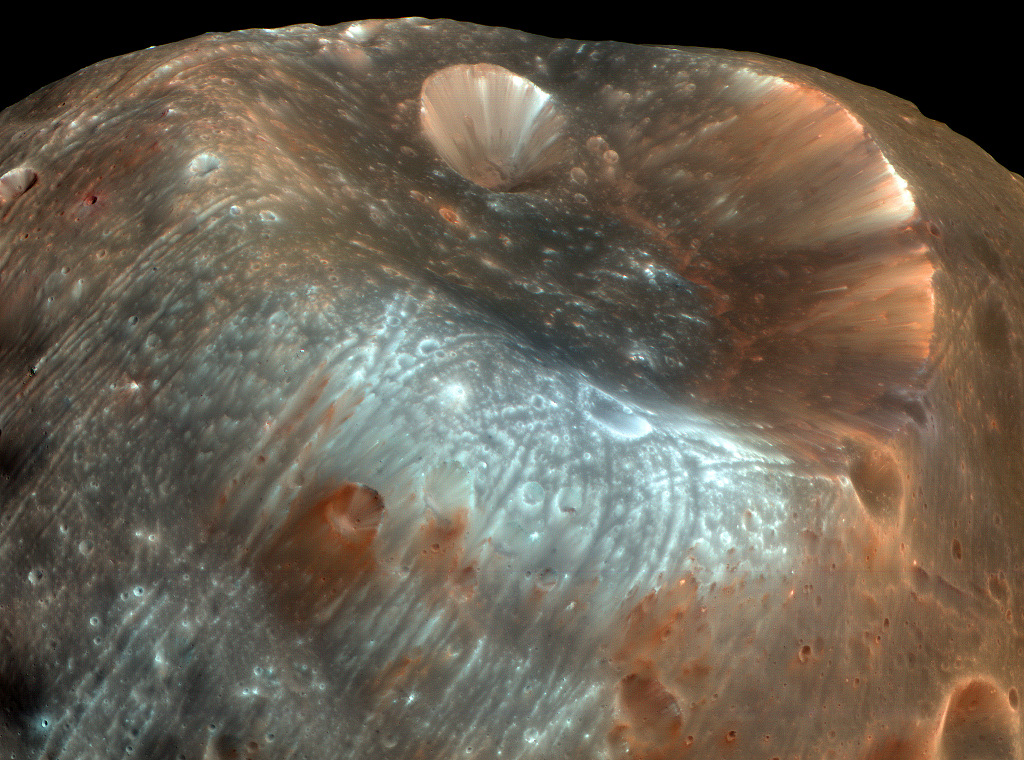 HiRISE, MRO, LPL (U. Arizona), NASA
HiRISE, MRO, LPL (U. Arizona), NASA

